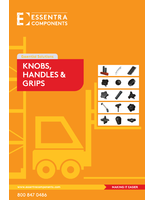WITTENSTEIN Motion Control's TPM Servo-Actuator Offers Easy Commissioning in Minutes - Worldwide
Summary:
Operation of the small and highly dynamic gearmotor TPM is even more simple and reliable, commissioning even more convenient.
TPM: High integration and features:
o TPM operable with over 20 controllers - worldwide
o Very easy commissioning in minutes
o Maximum dynamics
o High integration, small size
Release:
The leader in innovative products, WITTENSTEIN motion control is offering parameter data and completely pre-assembled cables for all common servo-converters for the servo-actuator TPM. This means for the user that simple and reliable operation of the TPM is guaranteed - worldwide.
The parameter files comprise the entire motor-specific settings of the controller. The servo-actuator TPM can therefore be put into service easily and in a very short time. Pre-assembled cables adapted to the motor and controller side simplify connection of the motor to the controller, ensuring 100% reliability in operation and during commissioning. The set up time is reduced to just a few minutes.
The TPM - maximum integration and dynamic response
The TPM has been developed as a product representing the highest level of integration. The TPM is a geared motor (rotary actuator) based on an AC servo motor and high-precision planetary gearing. The size of this compact unit is less than half compared to a conventional motor and gear combination.
High dynamic response of the geared motor
The TPM rotary actuator is characterized by an extremely high dynamic response: with an overall length of 186 mm , the TPM 50 builds up a maximum output torque of 500 Nm at a mass moment of inertia of 2.9 kgcm² - until now impossible values.
This high dynamic response is due to the considerable reduction in the moment of inertia: the mass moment of inertia of the actuator has simply been reduced by 50% compared to a conventional solution with separate motor and gear unit. The reason lies in its design: the rotor inertia is considerably reduced by the low-speed motor and the mass inertia on the gear side is reduced by around 90% because the gear pinion is directly integrated into the motor shaft, thus eliminating the need for a clutch. Example: with a load inertia of 150 kgcm² at the output, loads can be moved through 180 degrees with utmost precision in less than 150 milliseconds.
Short overall length
The extremely short overall length is another characteristic feature of the TPM, in addition to the low mass inertia at high input torques. Thanks to its integrated design, the smallest TPM model measures no more than 128 mm from the flange to the end of the actuator. High utilization of the motor capacity and the integrated design of the individual components eliminates the need for clamping hub and adapter plate as mechanical interface between motor and gear unit; in two-stage planetary gearings, the input stage is integrated into the planetary carrier of the output stage, thus reducing the active overall length of the low-speed motor. This is particularly advantageous for installation in confined spaces or if the drive is part of a moving system(such as in robots, automated systems or moving tools). The TPM's low weight is also useful here: the TPM 10 weighs no more than 3.6 kilograms.
High rigidity
The high rigidity of the drive (88 Nm/arcmin in the TP 050) permits optimum control response. The rigidity of the TPM gearing is twice as high as that of standard gear units. The TPM also has a highly rigid motor shaft due to the short distance between power generation in the air gap and the input pinion of the gear unit. This yields high gain factors for the electric control loop and drastically reduces the response times in the limit position.
Other features of the TPM
Applications can be positioned with utmost accuracy with the TPM. The integrated low-backlash high-precision planetary gearing has a reduced backlash of less than 1 arcmin. Moreover, the standard robot flange makes it possible to flange lever arms, pinions and other structural elements directly onto the gear output without an intermediate coupling. The TPM also sets standards in regards of reliability: the maintenance-free TPM rotary actuator is designed for a service life of more than 20,000 hours of operation. In the vast majority of cases, an additional supporting bearing will also prove unnecessary on account of the robust output bearing.
The TPM runs very quietly and smoothly since the high-speed input stage integrated into the motor side is encapsulated in the output stage: noise levels of less than 65 dB(A) are measured at speeds of 3000 rpm.
Maximum efficiency up to 94% in the two-stage range is another characteristic feature of the TPM. The low-speed motor similarly transforms the electrical energy into mechanical power with an efficiency of more than 90%. This keeps the actuator cool and the drive can be made more compact.
TPM Characteristic features
Dynamic response / positioning time Slews through 180° in less than 150 ms with a load of 150 kgcm²
Overall length Min. 128 mm (from flange to end of actuator)
Output torque 500 Nm at an overall length of 186 mm (TPM 50)
Torsional rigidity Up to 88 Nm/arcmin (TPM 050)
Long service life > 20,000 hours of operation
Flange output Standardized robot flange - load can be flanged on directly without coupling
Precision High-precision planetary gearing < 1 arcmin
Smooth, quiet running <65 dB(A) at 3,000 rpm
Overall efficiency Over 85% (efficiency of the two-stage planetary gearing: 94%, efficiency of the motor > 90%)
CONTACT:
Miriam Bilstein
Ph: (630) 540 5300
Fax: (630) 540 9015
mbilstein@alphagear.com
www.alphagear.com




